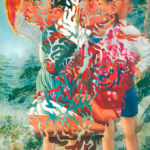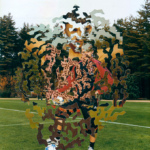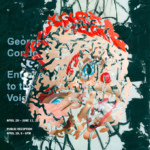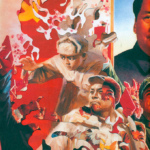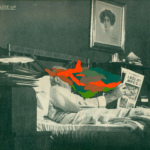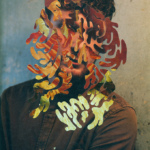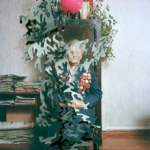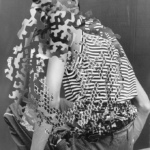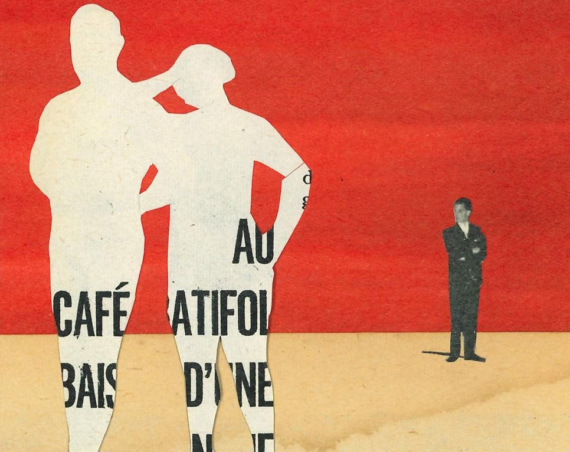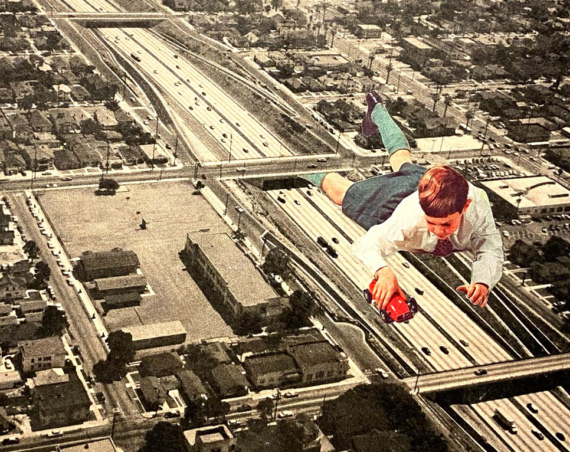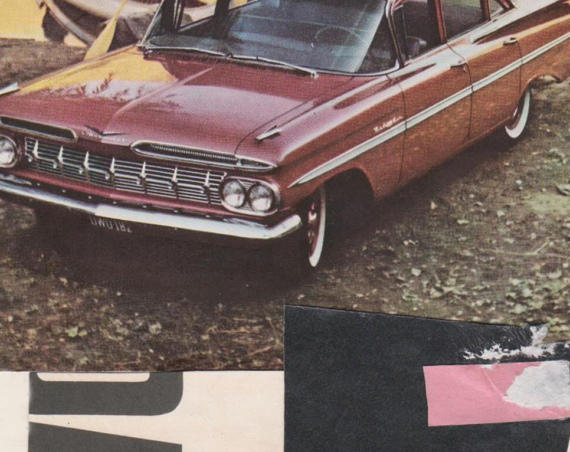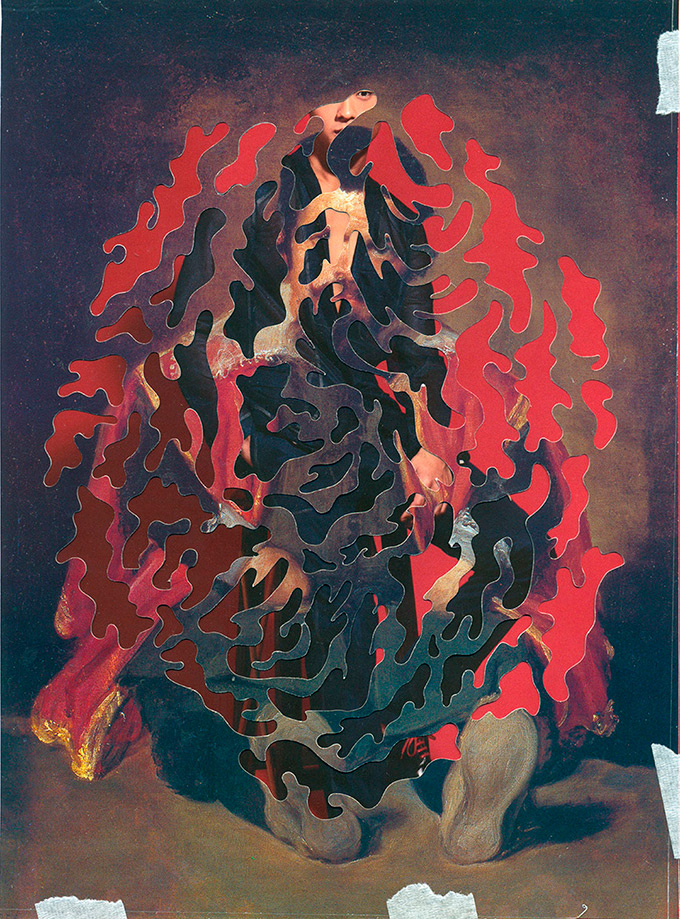
First few basic questions, who are you, what are you doing, where are you coming from?
My name is Máximo Tuja and I cut paper and pixels under the name of Max-o-matic. The name is silly, I know, but I have been using it for more than 15 years and I can’t find a proper way to leave it behind.
Since 2002 I lived in Barcelona, Spain. I’m originally from Buenos Aires, Argentina. I’m an artist, illustrator, and designer (not always in this particular order). I play guitar in a band (Aalbers). I run listening to podcasts. I read while I commute.
How would you describe your style? Did it take long to find your own style you were comfortable on?
This is a tricky question since my style has been always changing and evolving. Lately, I’ve been playing with the ideas of simplicity and complexity, trying to create visually overloaded work made with only a few elements. Working with collage, some people tend to think that the more elements the more complex and busy a piece will feel. But I tried to do the opposite: create an overelaborate work using only two pieces of paper with super detailed cuts. Visually, there’s a psychedelic feel in my works right now, things look a bit trippy and colorful. But it’s not a permanent feature of my work. Things, as almost always, will eventually change.
I’ve been making art for quite a long time, so every time I reflect on my work process and my evolution, I feel that the thing that suits me the most is change. I feel comfortable when I see things are moving forward.
Whenever I find something that I feel is interesting, I’m glad about this inner sensation of doing something that’s new and that I like, but at the same time, I know that I won’t be there for too long and that this arrival is also a departure to a new destination. Sometimes the style shift is radical and things are very different from the previous ones, but most of the time the visual evolution from one series to the other is quite subtle and the change can be perceived in the long run, when seeing my work with some perspective.
In early 2019 I had the chance to give a lecture about my work and that was a perfect chance to do some thinking about my work process. It was great to be able to trace back the origins of what I’m doing right now. When preparing this talk I could deconstruct the process that led me to my present style and it was awesome recognizing how small changes in my work led to something so different in relation to how things started. In my keynote, I showed samples of works from the different series I made from December 2014 to early 2019, and everything seemed part of a very logical plan. I loved to see that because even though in the end everything had a reason and a place in the process, the real thing was full of uncertainty and indecision. Taming chaos is maybe one of my superpowers 🙂
What are your favorite subject and media? How do you approach the subject when you start to work?
I mostly work on paper when making art. I also make some digital stuff, but it’s mostly related to my work as an illustrator.
In my work process, there’s a lot of planning, but also some space for discovery and improvisation. There’s plenty of freedom inside a self-determined set of rules that function as a skeleton that holds each series together.
I don’t usually make separated unique pieces, but I mostly work on series. When I start working on a new series, I take a long time gathering information and building some sort of framework to create my work. In this initial phase I select the source material I will use to work on that upcoming artworks. This selection will be made having in mind themes and issues I want to approach, color palette and other important things that will bring consistency to that series.
When all the material is selected I start cutting and manipulating paper. I do not compose anything yet. I just cut and start receiving information from the material I chose to work.
After this, there’s trial and error experimentation phase, playing with any style or idea that I have fooling around lately but also trying to find something new and exciting that makes me feel that “discovery rush” to get me going and start in one particular direction.
“I can’t control the message I’m sending and it always will be completed and adapted by the one who’s on the other side.”
How much your works reflect your emotions/views/ideology? Do you want your viewers to understand your art?
I guess that what I like most about art is that it offers the possibility of having many different layers of perception and interpretation of an artwork. You can start by the more basic “I like how it looks” and then jump into a deeper level of analysis and appreciation of the work. This conversation between artwork and viewer involves not only what I wanted to say through the piece, but also it’s informed and channeled through all the ideas and experiences that the viewer has. This is where things get really interesting because it’s not that important which emotions and ideas I try to put into my work, but the dialogue that is established with the viewer, who has its own agenda. From this perspective, I feel that it’s inevitable that viewers understand and give a certain meaning to my art, but what thrills me is that I can’t control the message I’m sending and it always will be completed and adapted by the one who’s on the other side.
As my work sometimes tends to be a bit abstract it might seem that there’s no message underlying the mass of colors and shapes. But surely are many. I’m always amazed by the awesome interpretations people make of my work. It’s way more interesting knowing what people can read in my artworks than explaining what I had tried to communicate.
Do you work on multiple pieces at the same time or simply focus on one? How long does it take to finish a piece?
I work in series, but in one piece at a time. As I cut lots of paper first (not for the whole series, but for many pieces) and then glue my compositions. I’m not really sure how much time it takes to create each collage. What I know, is that they take quite longer than the collages I made 15 years ago – those were more visceral and punk-ish. Then it was all about spitting out ideas with rage. Now there are other things that need a bit more thinking and planning.
Do you observe your development as an artist? During the time you have made collages, how’s your creative process changed? Do you like the challenge of working with something new?
This is related to one of my previous answers. My work process has changed in a superficial way: I may use different source materials or tools, but in essence, it is quite similar to how I have been approaching my work during all these years. I feel that my development is related to my permanent search for new ways of telling my stories and sharing my ideas. And this has made that my creative process is somehow in permanent evolution. Working with new ways of making what I do is what keeps me moving all the time. I can’t settle for too long. I need to move. This might be somehow a setback in my career because I’m not sure that I do have a trademark look that is sustained over time and can be easily recognizable. But this is the way I like to work and I can’t help it.
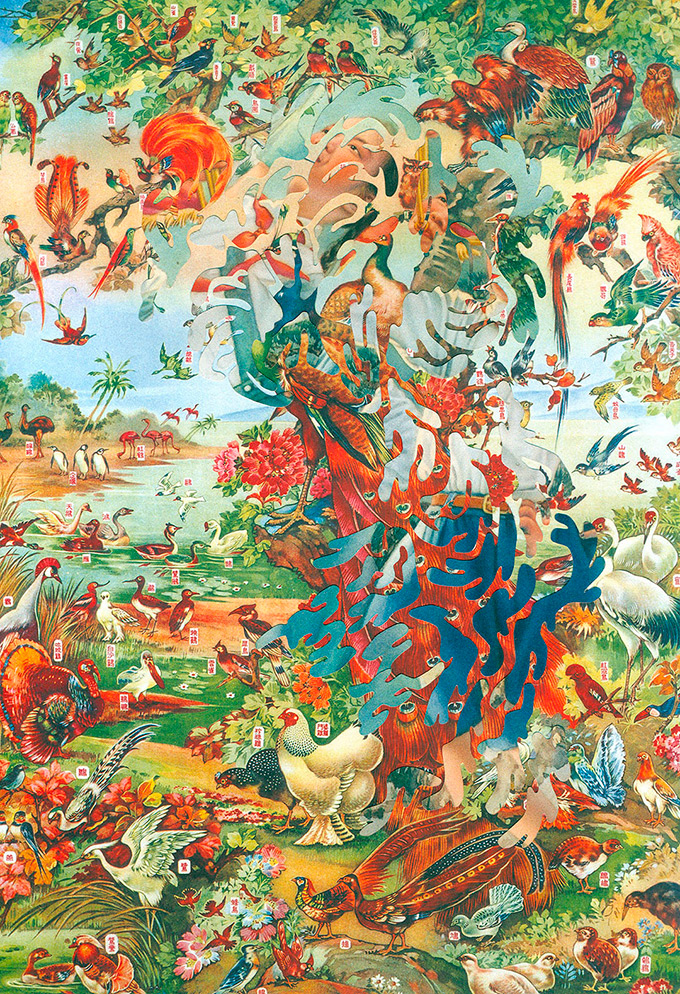
What has been your proudest moment with your art?
I’m not sure. I guess that it might be related to things that happened with The Weird Show. Being able to put up shows in so many great places around the world and having the chance to collaborate with and meet so many talented artists was something that really makes me proud. Also I feel quite happy that I have somehow helped, along with the people that worked with TWS all these years, to show contemporary collage in its most open and inspiring way, always trying to spread the word that collage is something more than all the retro cliches that diminish collage into a fad with no real substance.
You’ve showcased your works art in numerous shows around the globe, been featured and interviewed in art books and in well-recognized magazines just to name some things… What’s next? What drives you forward?
I just want to keep doing my stuff. I can’t stop doing it; I have no choice. So my main plan is just to keep going and enjoying the ride. 2020 will surely bring new exhibitions (both as a curator and an artist) and other collage flavored plans.
About what’s next in the short term: I’m finishing a great collaboration with artist Andrea Burgay co-curating issue #4 of her editorial project Cut Me Up –magazine that features the work of collage artists that are meant to be used as source material for submissions for each following issue. Cut Me Up is one of the most interesting projects I’ve seen so far, so I’m super excited about it.
Also, I’m starting a collaboration with an online gallery led by the amazing British artist Jono Boyle: LIE Gallery. It should be online soon and will include my latest collage series among the work of many other great artists. Finally, I got to write one of the introduction texts (the other one was from my dear friend Rubén B) of Cless’ upcoming book: Easy Tonto. This book features an amazing set of works made for an exhibition held in Madrid some time ago. These collages are some of the most outstanding ones I have seen in a long time, so that’s why I’m so happy and proud to be able to collaborate somehow in the publishing of the book.
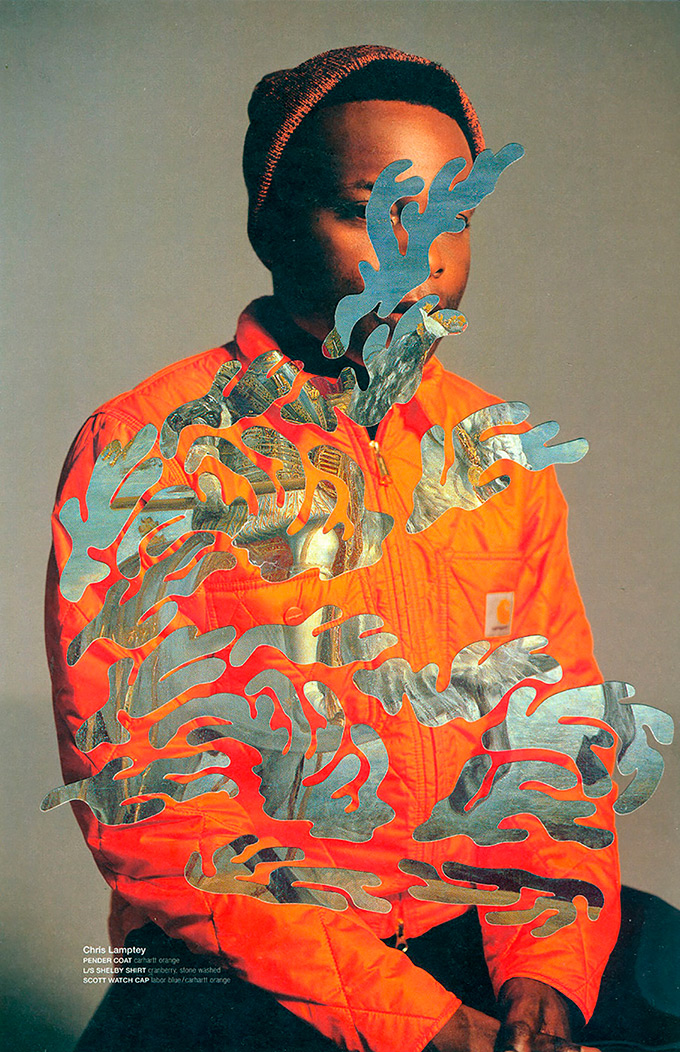
During the past few years collaging has gained media attention and more and more people around the globe have started to do collages, form art collectives, etc, how do you see the current situation and then the future of the medium?
Collage has grown quite a lot since the beginning of 2000 and had a great outburst during the last ten years or so. All these new people and collectives that have started making collage all around the world may seem a good thing for the collage community, but I’m not sure it always is. Sometimes (only sometimes, this doesn’t apply for all by any means) it seems that collage is just a cool excuse for some people to gather (which it really is!), but I don’t feel there’s always a real commitment in going deeper and investigating all the possibilities of collage as a medium.
In this context, collage is really alive on the surface, but it’s also kind of rotting in its core because it starting to be perceived more as a style than as a medium.
I feel that, as collage has a fast learning curve, new collage makers can easily buy a few old magazines and quickly replicate some moves and have a pretty decent outcome, feeling they already master the technique. This easy way into collage can be also an obstacle in developing collage as a medium: people feel comfortable at this initial phase and do not go further, experimenting and looking for their own voice and visual approach. Some just stay at the beginning of the path and replicate over and over the same collage. And this is the point where collage stops being a technique and starts turning into a style. How many collages including a kid eating from a bowl of soup with people bathing in a swimming pool inside of the bowl have we already seen? Haven’t we seen it enough times? It seems that no because I stumble into these collages almost on a daily basis on my Instagram feed. Working with shapes and colors can be infinite and following recipes may lead to restricting the mediums´ possibilities.
If you should describe your art with one word, what would it be?
Inevitable.
Max-o-matic around the internet:
Website: Maxomatic.net
Instagram: Instagram.com/maxomatic
The Weird Show: Theweirdshow.info

